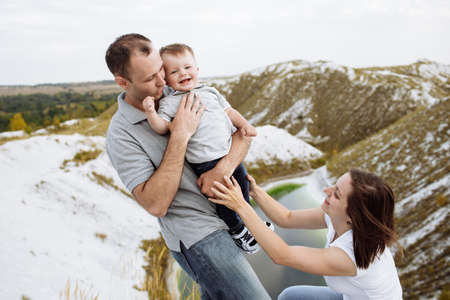1. Why GPS Devices are Essential for Family Hikes
Taking your kids on a hike is a wonderful way to introduce them to the beauty of nature and enjoy quality family time. But when you hit the trails, especially in large parks or unfamiliar areas, keeping everyone safe is a top priority. That’s where easy-to-use GPS devices come in. These handy gadgets aren’t just for techies—they’re practical tools that make hiking with children safer and less stressful for everyone involved.
The Importance of Reliable Navigation
It’s easy to underestimate how quickly a fun day outdoors can become nerve-wracking if you lose track of your route. Trails can get confusing, especially when there are multiple intersections or unmarked paths. Kids are naturally curious and might wander off the main trail. With a user-friendly GPS device, you always know exactly where you are and can quickly find your way back if you take a wrong turn.
Peace of Mind for Parents
Having reliable navigation technology means parents can relax and focus on enjoying the adventure instead of worrying about getting lost. You’ll be able to:
- Track your real-time location
- Mark waypoints like rest stops or scenic spots
- See distance to your destination or trailhead
- Share your location with others for added safety
How GPS Devices Compare to Traditional Navigation Tools
| Feature | GPS Device | Paper Map & Compass |
|---|---|---|
| User-Friendliness | Easy touch screens, clear directions | Requires learning navigation skills |
| Real-Time Tracking | Live updates on your position | No real-time tracking |
| Emergency Assistance | Some models offer SOS features | No direct emergency contact ability |
| Sharing Location | Can share with friends/family via apps | N/A |
| Weather Resistance | Many models are waterproof/shockproof | Papers/maps can get damaged by weather |
With these benefits, it’s clear why more American families are choosing GPS devices as must-have gear for their outdoor adventures. Whether you’re hiking in a national park or exploring local trails, having the right navigation tool can make all the difference in keeping your family safe and confident on every journey.
2. What Features Make a GPS Kid-Friendly
When you’re hiking with kids, picking the right GPS device can make all the difference for a smooth and fun family adventure. Not all GPS units are made with young explorers in mind. Here’s what to look for to ensure your child stays safe and engaged on the trail.
Touchscreens and Simple Interfaces
Kiddos love devices that feel familiar, so a touchscreen is often easier for them than tiny buttons. Look for big icons, colorful displays, and menus that don’t require endless scrolling or complicated steps. A simple interface means less frustration and more independence for young hikers.
Long Battery Life
Family hikes don’t always go as planned—sometimes you’re out longer than expected. A kid-friendly GPS should have a battery that lasts all day, so you won’t worry about losing your way if your trek takes a little longer. Rechargeable options are great, but backup batteries can be a lifesaver.
Durability and Weather Resistance
Kids are tough on gear! Your ideal GPS should survive drops, bumps, and even a bit of rain or mud. Devices with rugged cases and water resistance are designed to handle whatever your family adventure brings.
Comparison Table: Key Kid-Friendly GPS Features
| Feature | Why It Matters for Kids |
|---|---|
| Touchscreen Display | Easy to use, just like a smartphone or tablet |
| Simple Interface | No confusing menus; quick access to maps and location |
| Long Battery Life | Lasts all day, even if you take detours or breaks |
| Durability | Tough enough to survive drops and rough play |
| Water Resistance | Can handle sudden rain or accidental splashes |
User-Friendly Extras
Some GPS devices come with extra features that kids love, like built-in games or adventure challenges to keep them motivated along the trail. Others offer simple SOS buttons or two-way communication so everyone feels secure. Always check if these extras fit your family’s needs.
Remember:
The best GPS for hiking with kids will empower young adventurers without overwhelming them. Focus on the basics—simplicity, sturdiness, and lasting power—to keep your family safe and happy outdoors.

3. Top Easy-to-Use GPS Devices for Families
When hiking with kids, having a simple and reliable GPS device can make your family adventure safer and more enjoyable. In the U.S., several GPS devices stand out for their ease of use, durability, and features that both parents and kids appreciate. Here’s a roundup of popular options trusted by American families:
Popular Family-Friendly GPS Devices
| Device | Best For | Kid-Friendly Features | Why Families Love It |
|---|---|---|---|
| Garmin inReach Mini 2 | All Ages | Compact size, two-way messaging, SOS button | Lightweight and easy to carry; keeps families connected even without cell service |
| Garmin eTrex 22x | Younger Kids & Beginners | User-friendly buttons, bright color screen, simple menus | Very durable and straightforward; great for teaching kids navigation basics |
| Spot Gen4 Satellite Messenger | Tweens & Teens | SOS function, tracking, custom check-in messages | No-frills design is easy for older kids to use independently; peace of mind for parents |
| GeoZilla GPS Tracker for Kids | Littles (Ages 4+) | Real-time tracking, geo-fencing alerts, wearable design | Keeps tabs on young explorers; app notifications reassure parents during hikes |
| Garmin Montana 700i | Families Who Hike Often | Large touchscreen, topo maps, weather updates, SOS feature | Packed with features for serious family adventures; intuitive interface for all ages |
What Makes a GPS Device Kid-Approved?
The best GPS units for family hiking are tough enough to handle drops and splashes, have clear screens that are easy for kids to read, and simple controls that won’t confuse younger users. Devices with emergency features like an SOS button or live location sharing give parents extra peace of mind. Many American families also prefer models that let you send quick check-in messages or track multiple users at once.
Tips for Choosing the Right Device:
- Look for durability: Hiking with kids means bumps and drops are likely—choose rugged designs.
- Simplicity matters: Pick devices with straightforward controls and menus.
- Consider battery life: Make sure the device will last the length of your hike or camping trip.
- Think about connectivity: Satellite-enabled options work even when there’s no cell signal.
- Add fun: Some GPS devices include games or geocaching features to keep kids engaged.
Selecting the right GPS device helps your family stay safe and lets everyone—kids included—enjoy the great outdoors with confidence!
4. Tips for Teaching Kids to Use GPS Safely
Start with the Basics
Before you hit the trail, introduce your kids to the GPS device at home or in your backyard. Show them how to turn it on, read the screen, and find their current location. Keep explanations simple and encourage hands-on practice so they feel comfortable using the device.
Make Navigation Fun and Interactive
Turn learning into a game! Challenge your kids to find waypoints or landmarks using the GPS. You can even hide small treasures and create a family scavenger hunt. Let them take turns holding the device and leading the group along the trail.
Teach Essential Safety Rules
| Safety Tip | Why It Matters |
|---|---|
| Always stay with an adult | Keeps kids safe from getting lost or separated |
| Don’t rely only on GPS | Batteries can die; always carry a map and compass as backup |
| Mark “Home” on GPS | Makes it easy to return if needed |
| Keep personal info private | Teaches digital safety on shared devices or apps |
Practice Good Trail Etiquette with Technology
- Be mindful of others: Step aside if you need to stop and check your GPS so you don’t block the path.
- Respect nature: Remind kids not to leave trash or disturb wildlife while exploring new locations.
- Share responsibilities: Rotate who gets to use the GPS so everyone learns and feels included.
Create Teachable Moments During Hikes
If you make a wrong turn or lose track of the trail, use it as a learning opportunity. Show your child how to retrace steps using both the GPS and visible landmarks. This builds confidence and problem-solving skills for future adventures.
5. Making the Most of Your Family Adventure
Fun Ways to Use GPS Devices on Family Hikes
Hiking with kids is more than just a walk in the woods—its a chance to explore, learn, and make memories together. Easy-to-use GPS devices can turn your family hike into an interactive adventure. Here are some simple ideas for using GPS on your next outdoor trip:
Geocaching: The Ultimate Outdoor Treasure Hunt
Geocaching is like a real-life treasure hunt that’s popular all across the United States. Using your GPS device, you search for hidden containers (“geocaches”) placed by other adventurers. Many parks and trails have geocaches just waiting to be found! It’s a fun way to teach kids about navigation and teamwork while adding excitement to your hike.
How to Get Started with Geocaching
| Step | Description |
|---|---|
| 1. Sign Up | Create a free account on a geocaching website or app (like Geocaching.com). |
| 2. Choose a Cache | Use your GPS device or app to find caches near your trail. |
| 3. Find the Cache | Follow the coordinates and clues with your kids until you find the container. |
| 4. Log Your Find | Sign the logbook inside the cache and leave a small trinket if you take one. |
Track Progress and Celebrate Achievements
Kids love seeing their progress! Most GPS devices allow you to track distance, elevation, and even map your route. Challenge your family to reach certain milestones—like hiking a mile or climbing a hill—and celebrate when you hit those goals. You can even keep a hiking journal at home with printed maps from your hikes.
Ideas for Tracking Progress Together
- Mileage Chart: Keep a poster at home where everyone adds up miles hiked.
- Badge System: Give out “badges” or stickers for new skills learned or trails completed.
- Photo Map: Take photos at scenic spots and pin them on a map to remember where you’ve been.
Share Your Outdoor Experiences
Sharing stories and photos from your hikes helps build excitement for future adventures. Encourage your kids to share what they learned or favorite moments with friends, relatives, or classmates. Many GPS apps let you upload pictures and notes so others can see your journey too—just make sure not to share private details like home locations.
Together Time: Building Family Bonds Outdoors
The best part of using GPS devices on family hikes is the time spent learning, playing, and exploring together. Whether youre searching for geocaches, tracking how far youve gone, or sharing stories at the end of the day, these activities create lasting memories—and encourage kids to love the outdoors as much as you do!


